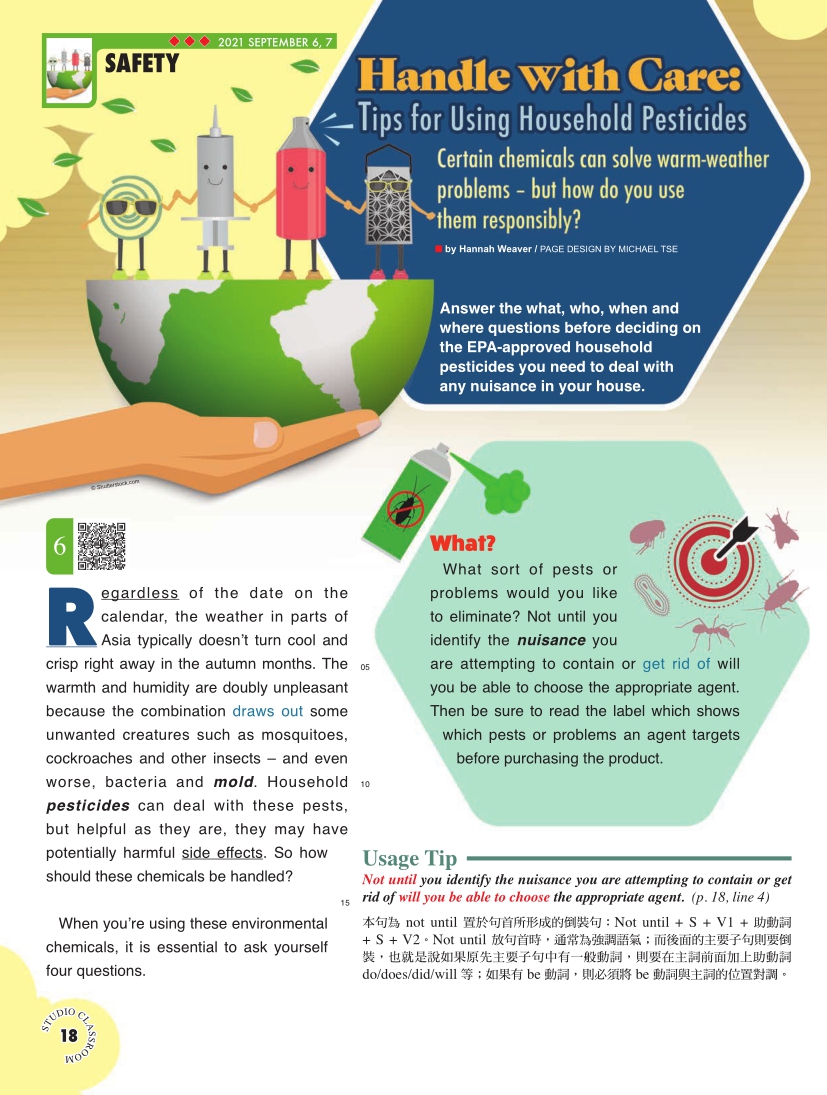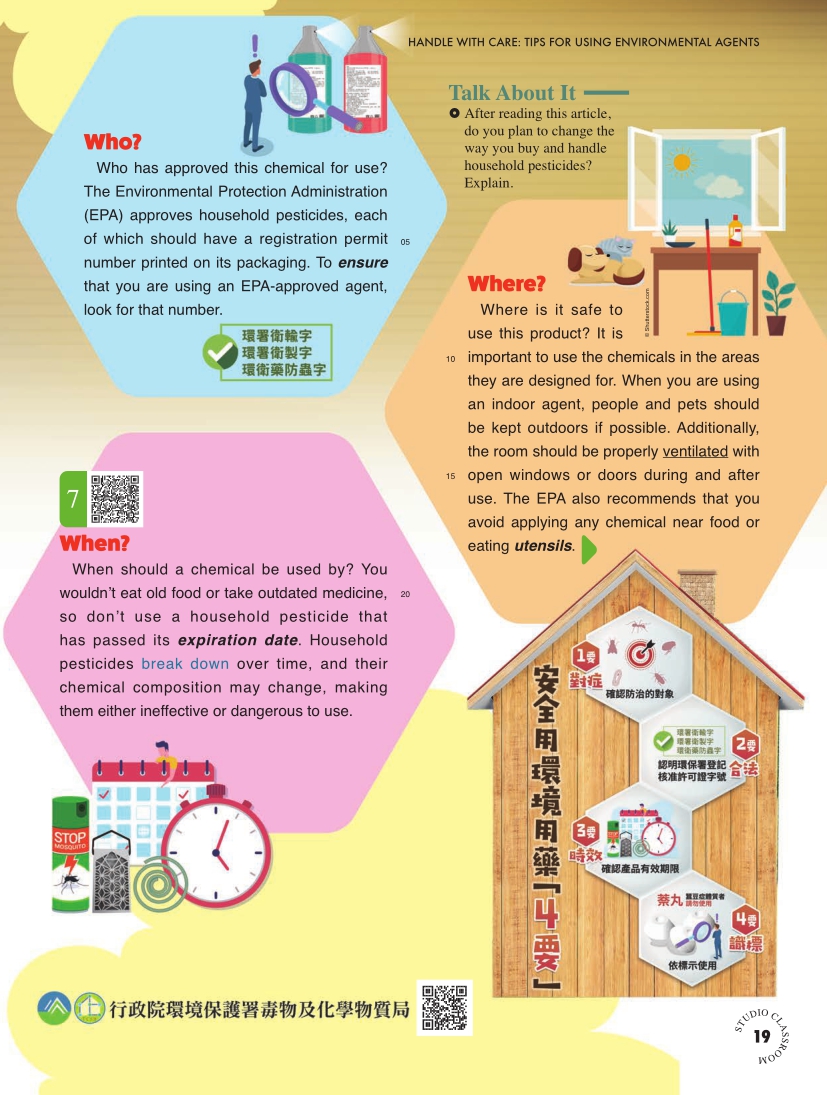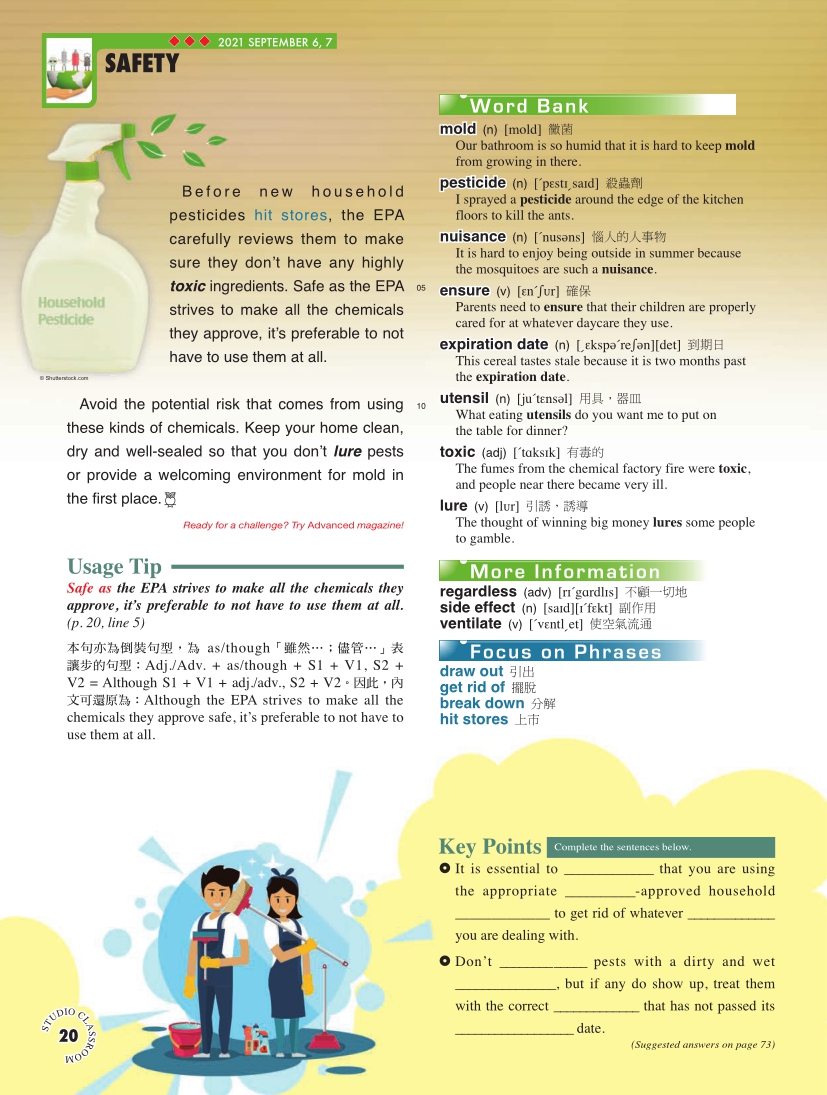- Date:2021-11-15
- Department:Comprehensive Planning Division
Handle With Care: Tips for Using Household Pesticides
by Hannah Weaver
Certain chemicals can solve warm-weather problems – but how do you use them responsibly?
Regardless of the date on the calendar, the weather in parts of Asia typically doesn’t turn cool and crisp right away in the autumn months. The warmth and humidity are doubly unpleasant because the combination draws out some unwanted creatures such as mosquitoes, cockroaches and other insects – and even worse, bacteria and mold. Household pesticides can deal with these pests, but helpful as they are, they may have potentially harmful side effects. So how should these chemicals be handled?
When you’re using these environmental chemicals, it is essential to ask yourself four questions.
What?
What sort of pests or problems would you like to eliminate? Not until you identify the nuisance you are attempting to contain or get rid of will you be able to choose the appropriate agent. Then be sure to read the label which shows which pests or problems an agent targets before purchasing the product.
Who?
Who has approved this chemical for use? The Environmental Protection Administration (EPA) approves household pesticides, each of which should have a registration permit number printed on its packaging. To ensure that you are using an EPA-approved agent, look for that number.
When?
When should a chemical be used by? You wouldn’t eat old food or take outdated medicine, so don’t use a household pesticide that has passed its expiration date. Household pesticides break down over time, and their chemical composition may change, making them either ineffective or dangerous to use.
Where?
Where is it safe to use this product? It is important to use the chemicals in the areas they are designed for. When you are using an indoor agent, people and pets should be kept outdoors if possible. Additionally, the room should be properly ventilated with open windows or doors during and after use. The EPA also recommends that you avoid applying any chemical near food or eating utensils.
Before new household pesticides hit stores, the EPA carefully reviews them to make sure they don’t have any highly toxic ingredients. Safe as the EPA strives to make all the chemicals they approve, it’s preferable to not have to use them at all.
Avoid the potential risk that comes from using these kinds of chemicals. Keep your home clean, dry and well-sealed so that you don’t lure pests or provide a welcoming environment for mold in the first place.







